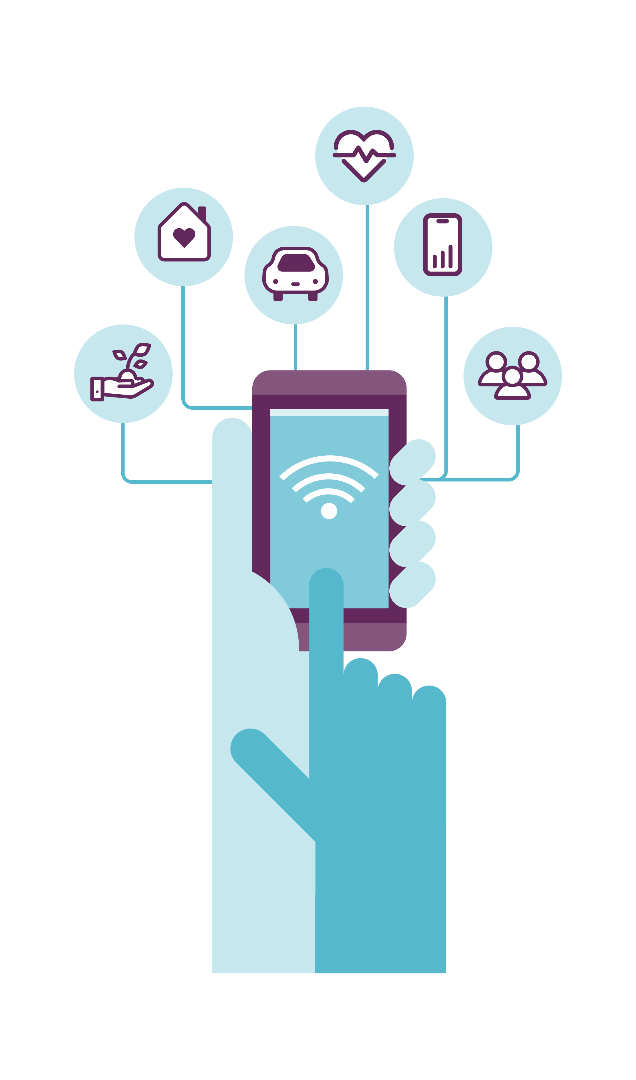Explore IoT and Cellular Standards
1. What are IoT and Cellular Standards?
1.1 What is IoT?
You have likely already heard about the Internet of Things (IoT) . But what is it really?
Put simply, ‘IoT’ refers to electronic devices, or ‘things,’ that connect or communicate with other devices or systems through the Internet. Some IoT devices are familiar to most people, such as smartwatches, fitness trackers, healthcare wristbands. But the IoT is so much more. Think for example about autonomous driving, remote surgery, smart grids, Internet of senses, optimised energy consumption, smart agriculture, and more accessible education.
IoT devices can communicate via different technologies specified in standards, such as Bluetooth , Wi-Fi , and cellular standards. Cellular standards, in particular 4G and 5G, are one of the pillars of the IoT. Why is that? This is because many IoT applications, known as ‘critical IoT’ require extremely reliable and ultra quick connectivity that only cellular standards can provide. Some examples are traffic safety, surgical robots, or industrial control of robotic machines. Another reason why cellular standards will be key for the IoT is that they best meet the needs of ‘ massive IoT ’, ‘ broadband IoT ’ and ‘ industrial automation IoT’ .
1.2 What are Cellular Standards?
Simply explained, standards are documents providing technical instructions for the design and operation of technologies, so that these are implemented uniformly by an entire industry. Cellular standards are the result of a collaborative process among hundreds of actors from industry, universities, and public institutions. They define how a cellular network operates and communicates with other networks. To achieve interoperability, these technical requirements are not only between networks but also for the devices. This is the reason why you can make calls on your smartphone, even if the other person (recipient) has a smartphone made by another company, serviced by a different network operator, and you both use a different network infrastructure.
Though they may go unnoticed to most people, cellular standards have transformed our lives. The first generation of cellular standards, 1G, enabled voice calls. By incorporating the innovation of SMS messaging, 2G gave rise to the era of text messaging. 3G allowed widespread mobile internet access, enabling users to send e-mails with their smartphones. 4G delivers the high data transfer speeds that have underpinned the smartphone revolution and app ecosystem, which continues to transform society to this day. Apps have changed the way people shop, work, learn, communicate, bank, get entertained and even the way they find partners. With 5G, large amounts of data can be transmitted between a vast number of devices at extremely high speeds (close-to-zero delay). Hence, consumers and business can and will continue to enjoy countless possibilities offered by IoT products and services using cellular technologies.
Because of cellular standards, consumers and companies have access to outstanding technology quickly and affordably. While we take many of these benefits for granted, they are the result of a balance of interests between those who contribute and those who implement the standard. For this reason, learning about them is so important.





